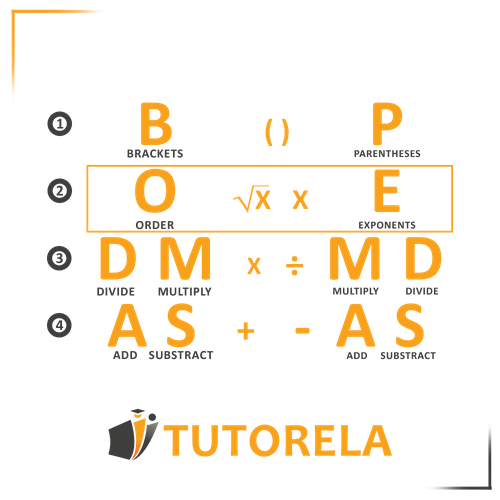The second step in the order of operations is - exponents and roots!

Master PEMDAS with exponents and square roots! Practice order of operations problems step-by-step with detailed solutions and instant feedback.
The second step in the order of operations is - exponents and roots!

Immediately after dealing with parentheses, we move on to exponents and roots!
Pay attention - even within parentheses, it's very important to maintain the correct order of operations!
Exponent - multiply the base by itself the number of times shown in the exponent (the small number on the top right).
Root - half power - which positive number when multiplied by itself will give the number written under the root.
\( 8-3^2:3= \)
First, compute the power: .
Next, divide: .
Finally, subtract: .
Answer:
First, compute the power: .
Next, divide: .
Finally, subtract: .
Answer:
First, compute the power: .
Next, divide: .
Finally, subtract: .
Answer:
First, evaluate the square root: .
Then, follow the order of operations (PEMDAS/BODMAS):
1. Multiplication:
2. Subtraction:
So, the correct answer is .
Answer:
First, evaluate the square root: .
Then, follow the order of operations (PEMDAS/BODMAS):
1. Addition:
2. Subtraction:
So, the correct answer is .
Answer: